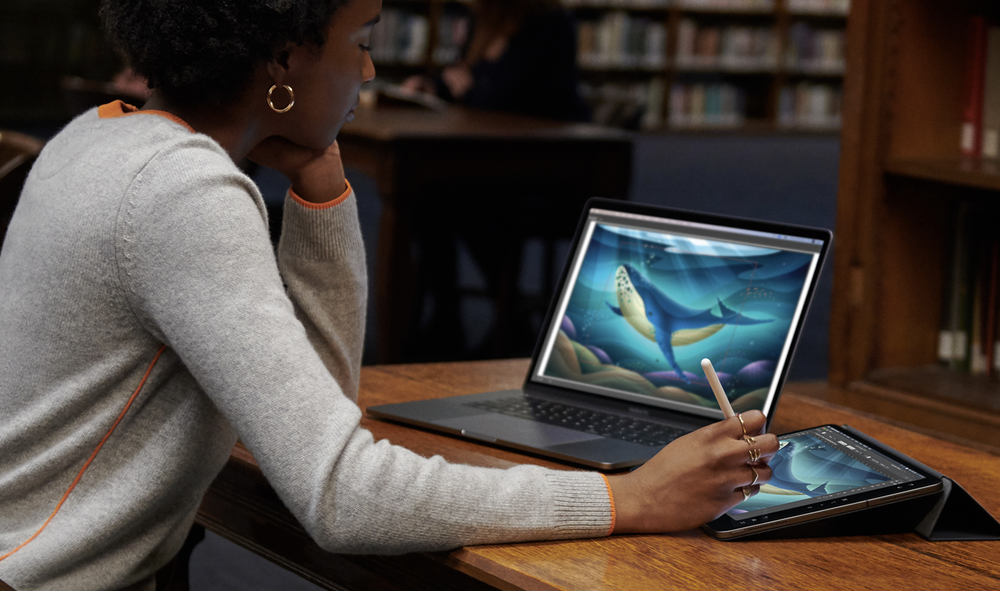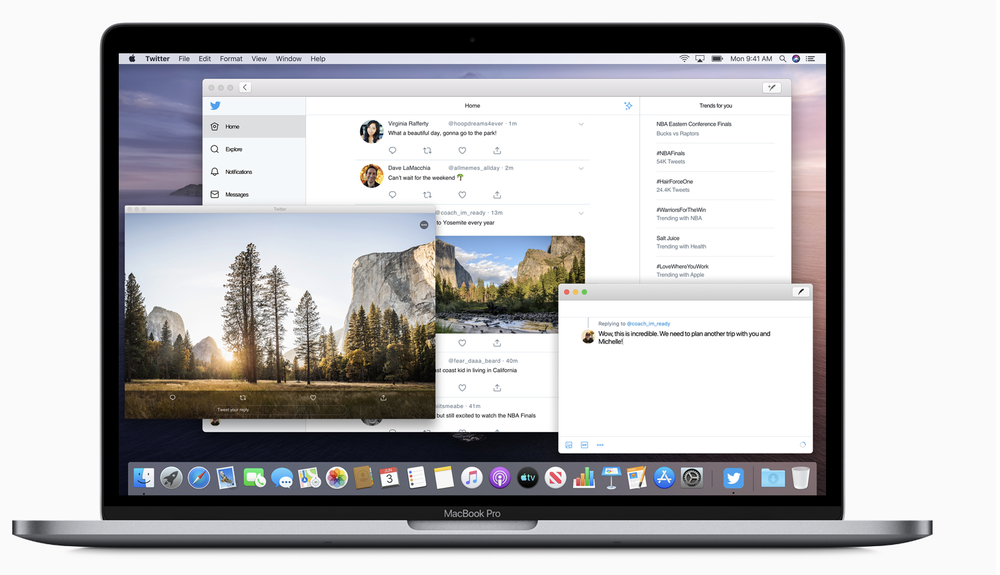At today’s Worldwide Developer Conference keynote, Apple gave us a sneak peak at the upcoming macOS Catalina, the latest version of its desktop operating system. The upgrade will replace iTunes with Apple Music, Apple Podcasts, and Apple TV apps.
A new Sidecar feature will enable users to extend their Mac desktop by using their iPad as a second display or as a high-precision input device across creative Mac apps. New security features keep users better protected and Voice Control lets users control their Mac entirely with their voice, according to Craig Federighi, Apple’s senior vice president of Software Engineering.

The new Music app offers users access to their entire music library, whether they downloaded the songs, purchased them or ripped them from a CD. For those who like to own their music, the iTunes Music Store is still around.
The Apple TV app features Apple TV channels, personalized recommendations and over 100,000 iTunes movies and TV shows to browse, buy or rent — so users can enjoy 4K HDR and Dolby Atmos-supported movies. The Watch Now section features Up Next, where viewers can keep track of what they are currently watching and resume on any screen. This fall, Apple TV+, Apple’s original video subscription service, will be available in the Apple TV app.
The Apple Podcasts app offers more than 700,000 shows in its catalog and the option to automatically be notified of new episodes as soon as they become available. The app also features new categories, curated collections by editors around the world and advanced search tools that can find episodes by host, guest or even discussion topic.
For users who sync their media to their devices using a cable, they can easily do so in the new entertainment apps, says Federighi. And when users connect a device to their Mac, it will immediately show up in the sidebar of Finder, enabling them to backup, update or restore their device.
With Sidecar, an iPad can be used as an extended display for Mac and a high-precision drawing tablet across supported Mac apps. For users on the go, Sidecar makes it easy to bring an extended display with them so they can spread their work out over two displays wherever they happen to be.
When paired with an Apple Pencil, they can use their iPad to draw, sketch or write in any Mac app that supports stylus input. Sidecar is designed to work well as a tool for editing video with Final Cut Pro X, drawing with Adobe Illustrator or marking up iWork documents. And like all Continuity features, Sidecar can run on a wireless connection, so users can work with greater mobility.
With macOS Catalina, Apple is introducing new assistive technologies to help users get the most out of their Mac. Voice Control is a technology that enables users who can’t operate traditional input devices to control their Mac entirely with their voice using on-device Siri speech recognition technology.
New labels and grids let users interact with virtually any app using comprehensive navigation tools, with audio processing happening on-device. Voice Control is now also available on iOS and iPadOS, so users can control their device entirely with their voice, even gestures like tapping, swiping and scrolling.
With macOS Catalina, Gatekeeper now checks all apps for known security issues, while new data protections require all apps to get permission before accessing user documents. Approve with Apple Watch lets users approve many security prompts by simply tapping the side button on their Apple Watch.

Now all Macs with the T2 Security Chip support Activation Lock to make them less attractive to thieves, says Federighi. And with the new Find My app, the location of a lost or stolen Mac can be securely and anonymously relayed back to its owner by other Apple devices, even when it is offline.
Screen Time on the Mac gives users insight into how they spend time in apps and on websites, and the tools to help decide how to spend their time. Screen Time is designed for the way people use their Mac, including a new “One more minute” feature that gives users more time to save their work or log out of a game.
Users can schedule time away from their Mac and determine how much time they want to spend within apps, websites or categories of apps. With iCloud, users can sync Screen Time settings and combine their usage across iPhone, iPad and Mac privately through end-to-end encryption. And Family Sharing gives parents new tools to better manage their children’s device usage, including the ability to choose who their children can communicate with and when.
Also available with macOS Catalina are new application programming interfaces (APIs) and tools for developers to help them bring iPad apps over to the Mac. This is the feature previously discussed under the code name “Marizan.”

According to Federighi, additional app enhancements include:
-
Photos features a new browsing experience that intelligently showcases the user’s best pictures.
-
Safari has an updated start page that uses Siri Suggestions to elevate frequently visited sites, bookmarks, iCloud tabs, Reading List selections and links sent in Messages.
-
Mail in macOS Catalina adds the ability to block email from a specified sender, mute an overly active thread and unsubscribe from commercial mailing lists.
-
Notes now has a brand new Gallery View, more powerful search tools and additional collaboration options.
-
Reminders has been redesigned with an all-new user interface that makes it easier to create, organize and track reminders.
The developer preview of macOS Catalina is available to Apple Developer Program members at developer.apple.com starting today, and a public beta program will be available to Mac users later this month at beta.apple.com. macOS Catalina will be available this fall as a free software update for Macs introduced in mid-2012 or later. For more information, visit apple.com/macos/catalina-preview. Features are subject to change. Some features may not be available in all regions or languages.
